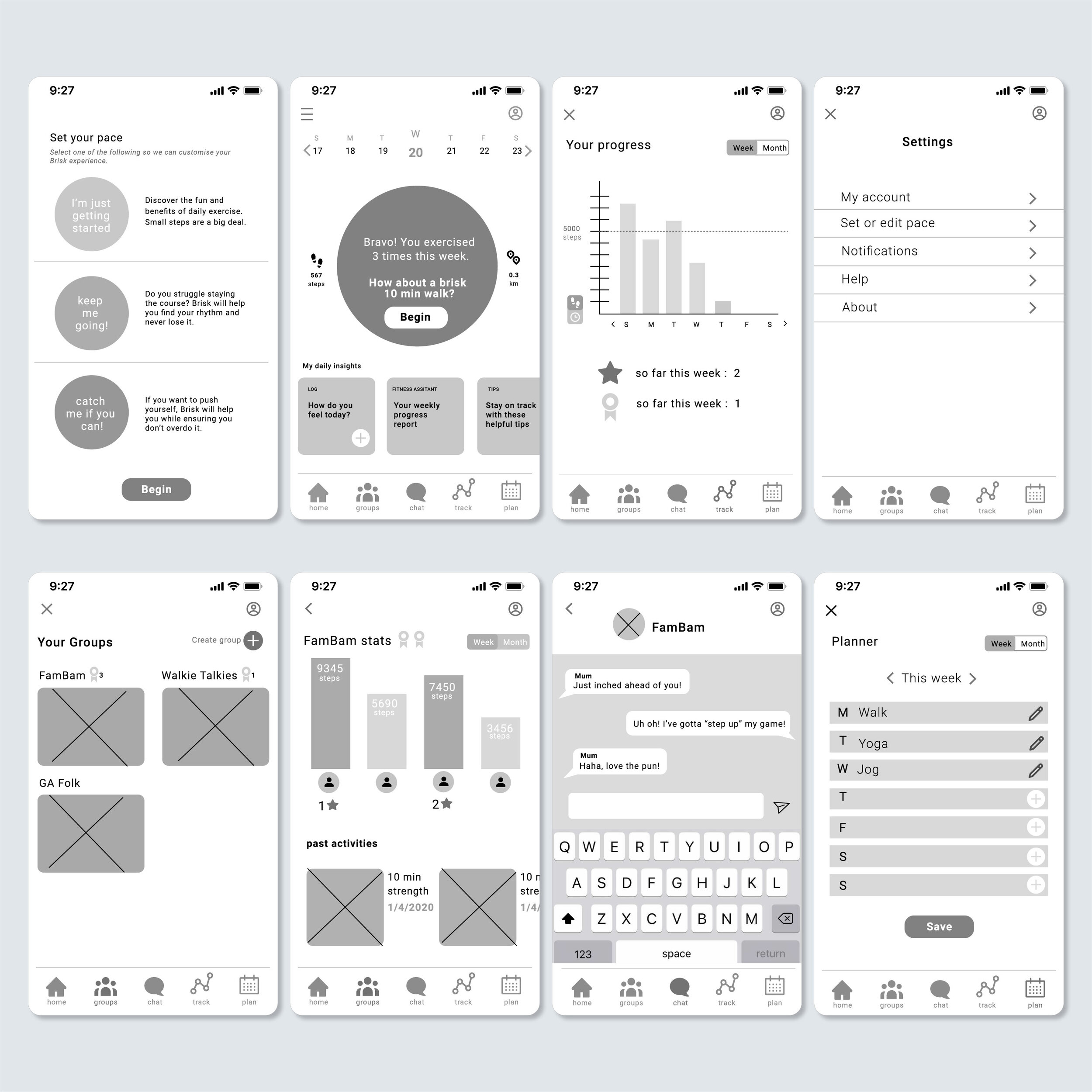
Brisk app - Making daily exercise more achievable for everyone.
A gentle nudge to get up and get active.
Overview
The brief: A recent report indicated that Melburnians are not getting enough exercise. The Lord Mayor’s Charitable Foundation (LMFC) was seeking solutions on encouraging people to be proactive about this challenge as a community while focusing on health equity.
How might we create an engaging way for people to be proactive and stay motivated about regular exercise?
Synopsis: This was a concept project where I was one of two UX designers. Due to covid-restrictions, the project was conducted remotely.
Duration: 10 days.
My role: Project management, UX research, analysis, strategy, ideation, mid-fidelity prototyping, and testing.
Deliverables: A clickable prototype demonstrating the MVP; client documentation.
Tools: Pen + Paper, Miro, Figma, Zoom.
Methods:
Business Analysis
Competitive & Comparator Analysis
Survey
User Interviews
Affinity Mapping & Data Synthesis
Archetype development
Journey Mapping
Sketching
Wireframing
Prototyping
Usability Testing
Why is this a problem and how might we fix it?
• Most people know they should exercise but many lack the motivation to begin a routine and continue with it for the long term.
• They find it boring or tend to give up if they stumble and find it hard to get started again.
• People can be motivated by activities that are easy to do and take little steps when starting a new habit or making a behaviour change.
The solution: Brisk
Little steps to behaviour change
Brisk is a social, walking app that helps users begin and stick with an exercise routine.
Combining encouraging messages, progress tracking and gamification features to engage users helps simplify the process of beginning and being consistent with an exercise routine for the long term.
The app encourages users to be proactive about daily exercise, forming a daily habit with the support of their friends, family and community.
The Research
What stands in people’s way?
● What is holding people back from regular exercise?
● How can people be encouraged to consider developing new habits?
● What motivates people to keep going while making a change?
● How can people be rewarded for being proactive and for changing their habits?
We used a short multiple-choice survey and free text follow-up questions to gather quantitative data on users’ exercise habits, and 10 interviews to gather qualitative insights into what causes them to avoid exercise. About 80% of participants were less likely to exercise if a negative trigger was present.
Interview insights
Designing for The Ex-erciser and The Procrastinator
As part of our user research, we interviewed 10 people and identified and developed two archetypes who could be our target users.
“I don’t feel like exercising when it’s cold or rainy”
Our target user has wavering motivation which is affected by the seasons, day or the week, or even the weather. How might we erase these troughs for users to stay motivated to exercise consistently?
Here’s a Journey Map I created to visually communicate how motivations fluctuate with the changing seasons.
Behaviour change = motivation + ability + triggers
To understand how people can be encouraged to consider developing new habits, we did some further secondary research and came across Dr. BJ Fogg’s philosophy and model of behaviour change which explains that three elements must converge simultaneously for a behaviour to occur:
Motivation, Ability and a Trigger.
When a behavior does not occur, one of these three elements is missing.
Core motivators: Time, money, effort, cycles, deviance, routine.
Simplicity factors: Facilitator, spark, signal.
Further synthesis
We translated our primary and secondary research into this Venn diagram with the insights we discovered through our user interviews to ideate how each of these elements could inform our solution.
Problem framing + opportunity
The user needs an engaging way to stay consistent with their exercise routine, because they lack motivation, find exercise boring and often slip into sedentary habits resulting in feelings of guilt.
The business needs a way to encourage people to be proactive about exercise as a community while focusing on health equity.
How might we create a sustainable online exercise community with an engaging way for people to exercise proactively every day and stay motivated for the long term?
Why an app
We felt that it was vital to recommend an app over a website to utilise the functionality and effectiveness of a mobile phone such as:
Offline access: Being able to track steps (pedometer).
Triggers: Sending motivating messages at the right time.
Gamification: Having friendly competitions with your group to facilitate user engagement and enjoyment.
Comparators use behaviour science to build and encourage habit change
Active Victoria uses gamification features where people can be social while exercising within teams.
Strava allows uses to connect and compete with others.
Drink Water introduces a bit of gamification fun to encourage people to drink more water.
Headspace is a wonderfully calming app that teaches people to meditate.
The patterns I spotted from researching comparators later influenced the features of our MVP. At this stage, it was already clear to us that our solution needed to adopt a gentle, encouraging tone.
Design Strategy
Not allowing secondary features to hamper primary functionality
I had the initial idea to create a social walking app called “Brisk”. Walking is easy for most people to do every day and I thought the name “Brisk” was catchy & apt. The social aspect was to help our target users feel connected to their community to keep them engaged & motivated.
We chose to calm the Brisk app as it matches the tone that resonates with our key audience. The app would have a gentle, encouraging messages to nudge the user to do an easy exercise like walking every day.
From researching behaviour change and analysis of comparators like Headspace, we uncovered that gamification features have the potential to facilitate behaviour change because it increases engagement and user self-contribution.
I sketched some initial ideas for our app design.
Ideation — some of my initial sketches
The Solution
Key features of the Brisk app
Gentle, encouraging customised messaging reminders and notifications based on the user’s mood log, the season, the weather, health benefits to gently nudge users along to help form a daily exercise habit.
Social — users can create or join groups to give them a sense of connection
Gamification — to help users stay engaged with friendly competitions and to increase their self-contribution.
Tracking — users can track their progress to give them a sense of achievement.
Planner — users can plan a routine to empower them to self-motivate and encourage proactivity.
Gentle nudges for beginners
The app will send customised messages based on what the user selects when onboarding — for example, gentle nudges for beginners.
The app’s messaging also changes based on what the user has logged their mood as for the day, what the weather is like or opt-in to notifying their group-mates if they’re not feeling motivated so they can receive an encouraging message from them instead which in turn encouraging the sense of community and belonging.
Sample app messages
Good Morning! How do you feel today?
Do you feel like your memory is improving? You’ve got cardio to thank for that!
You’ve been doing so great. It’s so normal to have off-days.
Rainy day idea: Invite your friend for a boogie on zoom.
No sunshine? No problem. Cleaning the bathroom & windows is a great arm workout.
It looks like <your friend> hasn’t exercised in a while. Why don’t you invite her for a walk?
We picked orange as an accent colour to evoke enthusiasm, energy and warmth.
Testing early and often
Is the navigation intuitive?
Is the user able to create a group?
How would the user see their progress?
Is the user able to find where to edit their notification settings?
The Results
Overall users were able to easily complete the task we gave them and we received positive feedback on the app design and features.
There was however some confusion on the hamburger menu to change settings. Users expected to manage their settings via their profile.
Iteration: In addition, we questioned setting “goals” and its potential of triggering feelings of guilt or failure in our target users. We decided to change the wording from “set goal” to “set pace” and have this as an optional setting for users who might find it helpful staying on track and comparing their progress. We will need to test this further.
Refining the UI design
I wanted to clean up the UI design to show where the app could go in further iterations. With this version, the text is now more legible. I felt the bright orange in the earlier version could potentially come across as a bit jarring. I wanted to tone it down a little and use it in fewer areas just as an accent colour to evoke a gentler approach which ties in better with our overall design strategy.
Note: I refined the UI design after the 2-week timeframe of this concept project as part of my own personal project. This is not the final design. There’s more I’d like to refine such as possibly adding some blue to calm the feel of app further, refine the typography, graphical elements and composition to polish up the overall design.
Here’s a prototype of the updated version. I’d love to hear what you think!
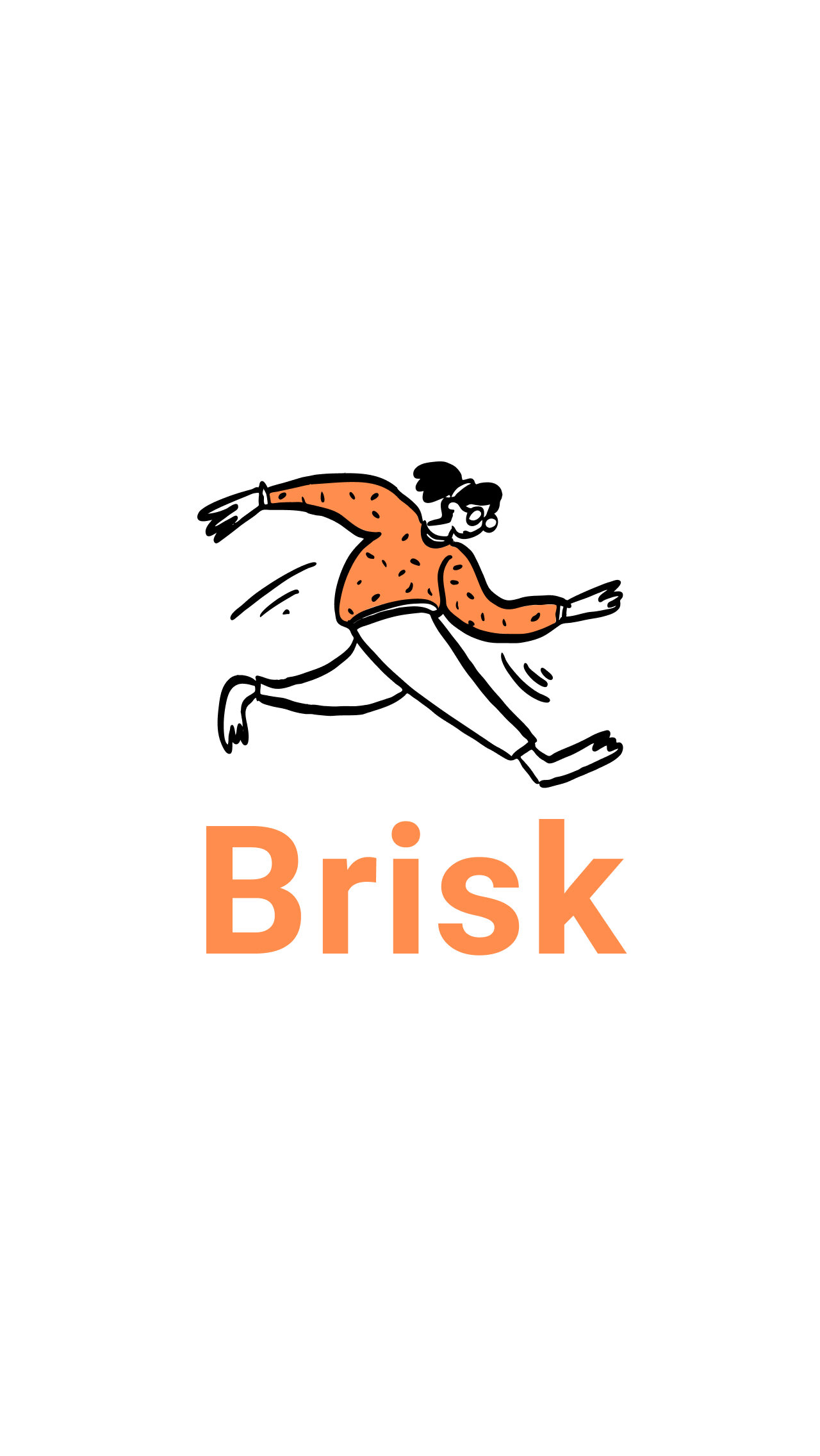
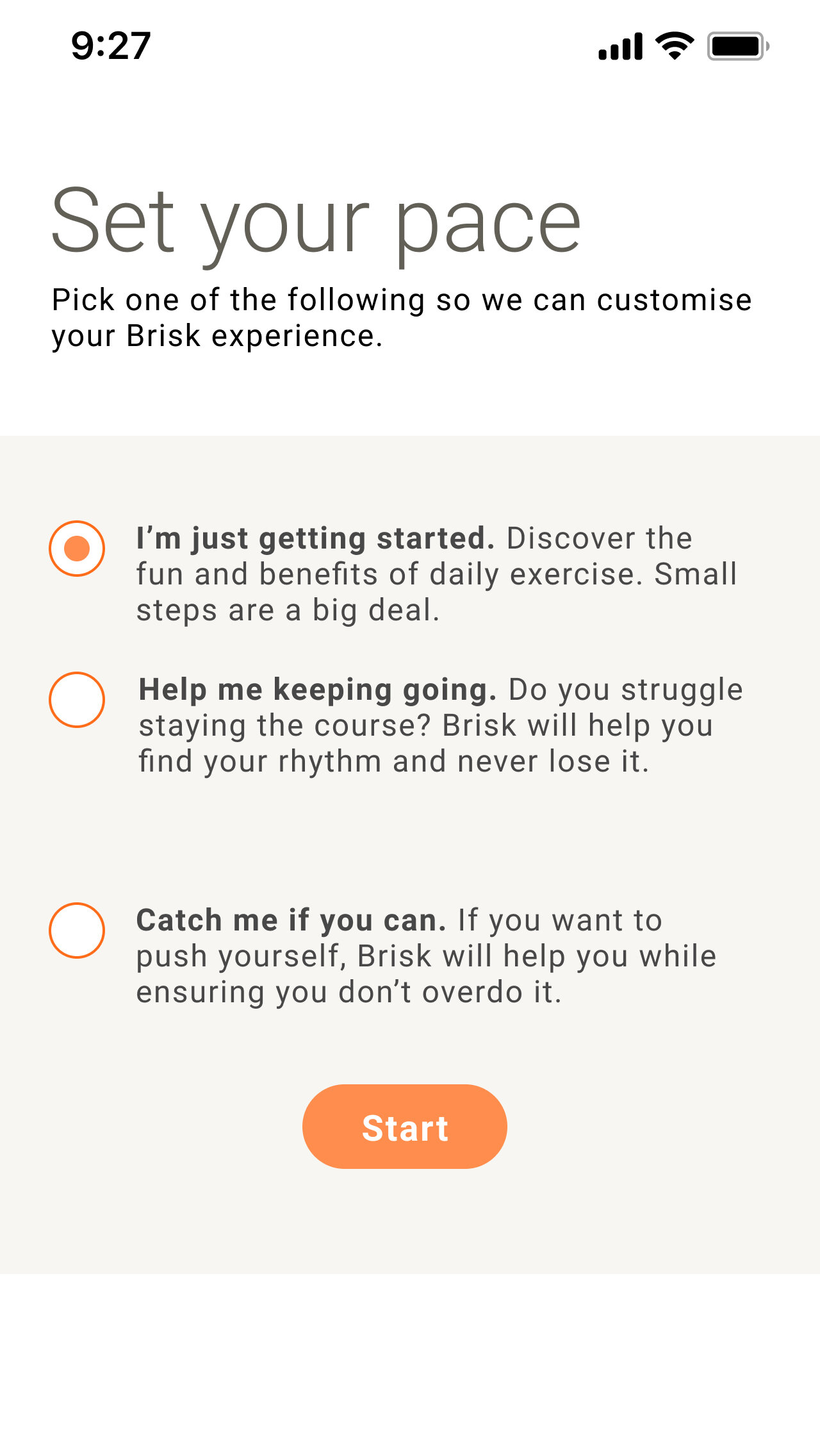

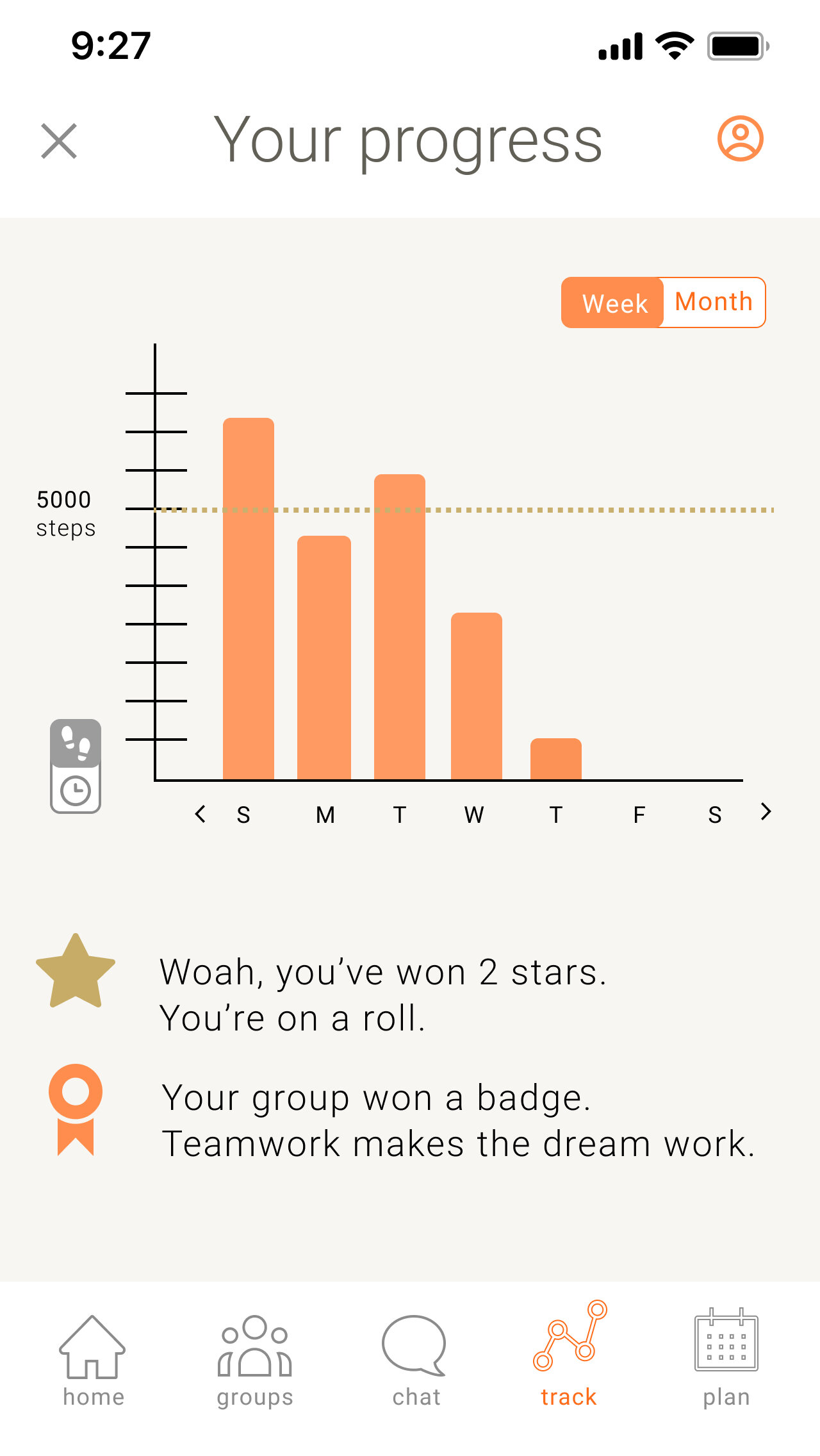
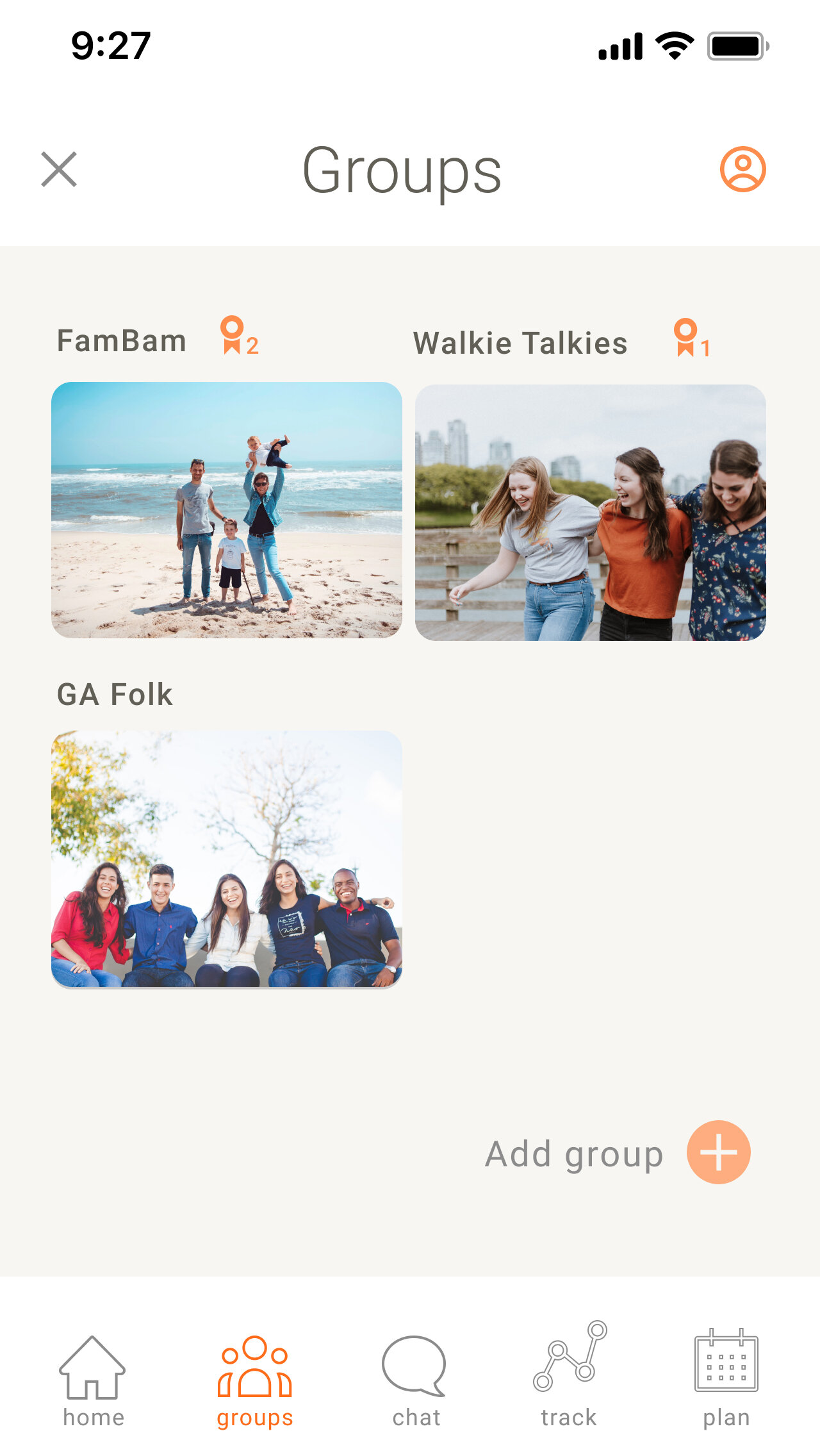
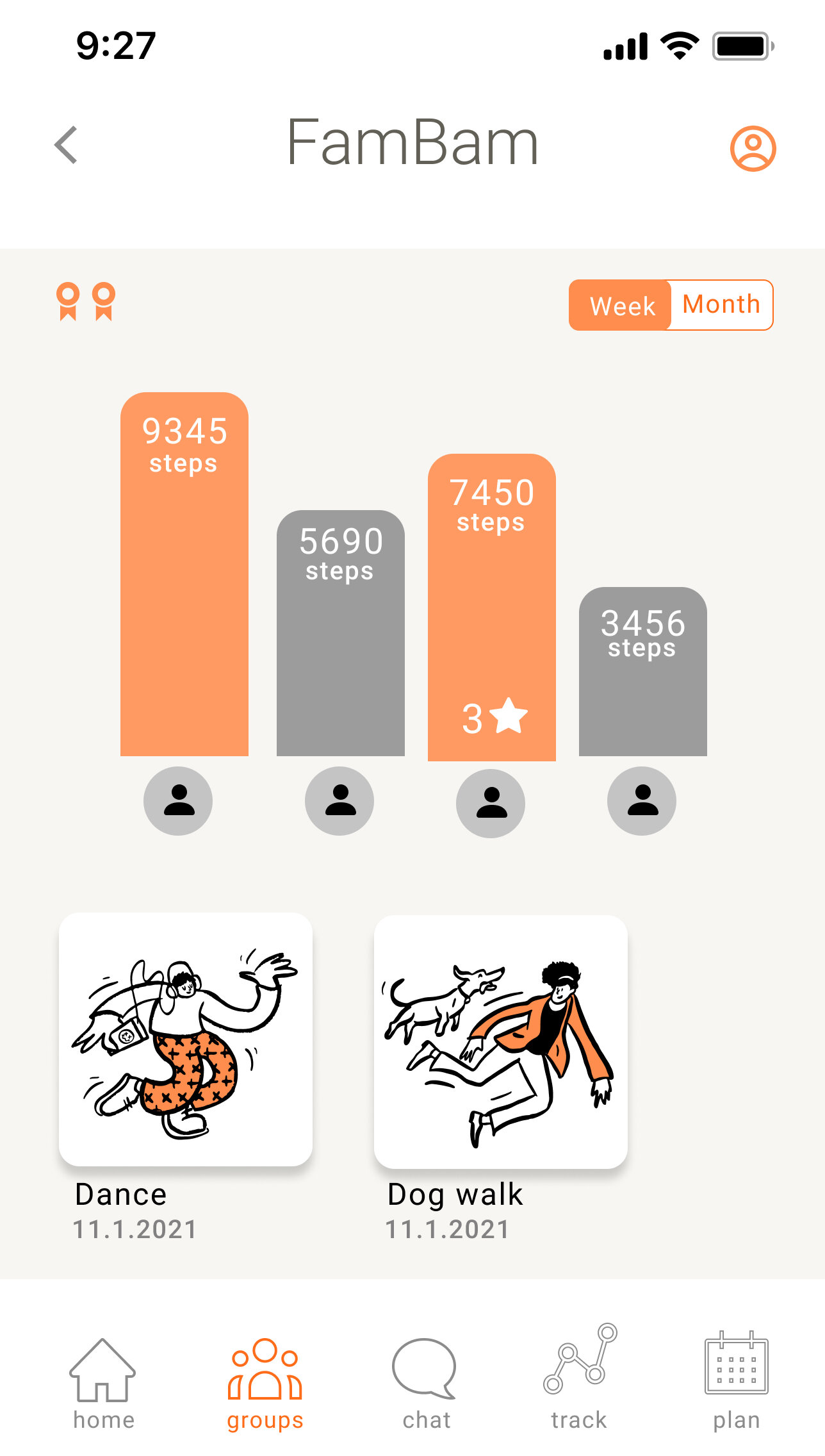
Reflection
Gaining rich insights into what drives users to build habits and how they perceive failure took time and an empathetic ear.
Getting strangers to open up to their personal flaws and shortcomings while balancing the interviewer/interviewee relationship and controlling the structure of the interview without wasting the short amount of time we had was a rewarding experience.
One skill I have taken away from this project is how to build strong rapport early. In so doing I can better predict where to break the structure while maintaining comparative insights.
Next project (coming soon) >>









